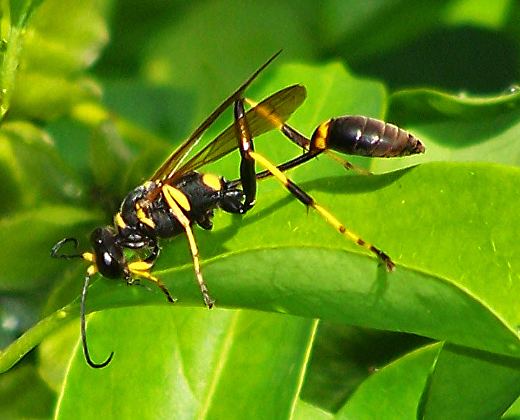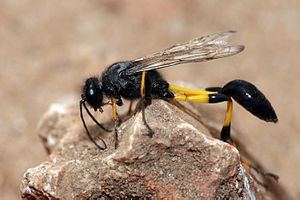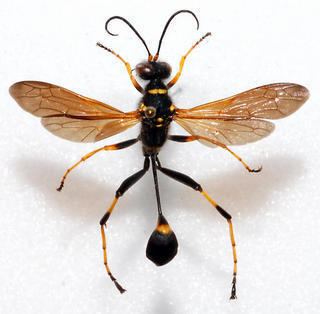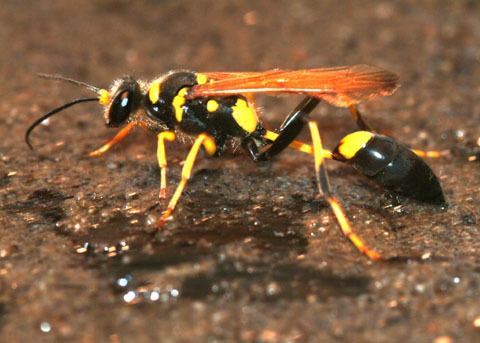Scientific name Sceliphron Higher classification Sceliphrini Order Hymenopterans | Superfamily Apoidea Subfamily Sceliphrinae Rank Genus | |
 | ||
Lower classifications Black and yellow mud dauber, Sceliphron curvatum, Sceliphron destillatorium | ||
Sceliphron caementarium
Sceliphron is a genus of Hymenoptera of the Sphecidae family of wasps, commonly referred to as mud daubers. They are solitary and build nests made of mud. Nests are frequently constructed in shaded niches, often just inside of windows or vent openings, and it may take a female only a day to construct a cell requiring dozens of trips carrying mud. Females will add new cells one by one to the nest after each cell is provisioned. They provision these nests with spiders, such as crab spiders, orb-weaver spiders and jumping spiders in particular, as food for the developing larvae. Each mud cell contains one egg and is provided with several prey items. Females of some species lay a modest average of 15 eggs over their whole lifespan [1]. Various parasites attack these nests, including several species of cuckoo wasps, primarily by sneaking into the nest while the resident mud dauber is out foraging.
Contents
- Sceliphron caementarium
- Sceliphron caementarium black and yellow mud dauber on gerbera jamesonii
- Sceliphron species
- References

As is the case with many insect genera, there are many tropical species. Some common temperate species include the black and yellow mud dauber (Sceliphron caementarium) and Sceliphron curvatum.

Like other solitary wasps, Sceliphron species are not aggressive unless threatened. They are sometimes regarded as beneficial due to their control of spider populations, though the spiders themselves may be beneficial in controlling pest insects. Species such as Sceliphron curvatum are invasive in some parts of Europe, where they have been observed to rapidly increase their range in recent years [2].

Sceliphron caementarium black and yellow mud dauber on gerbera jamesonii
Sceliphron species



